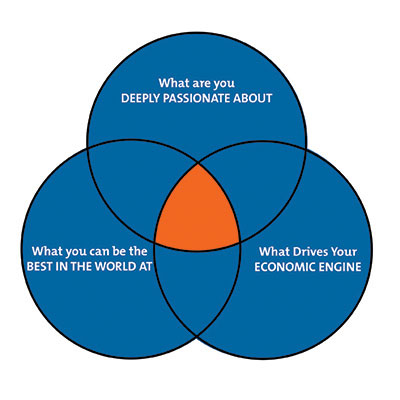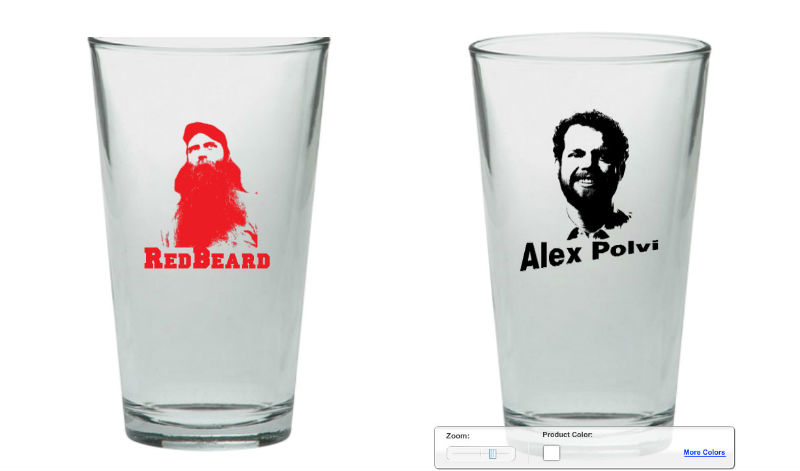Lessons Learned from our Journey to 3500 Customers
Last month we turned two years old, closed a Series A funding round and onboarded our 3500th customer. Here's what we've learned!

My longtime friend and business consultant Steve Smolinsky has a great tagline for his business: “Pay Attention. Add Value. Have Fun.” He obviously likes it because he trademarked it! I thought of his snappy catchphrase while planning this post about our journey from zero to 3500 customers, a milestone we reached just a few weeks back.
Steve’s moniker is a fitting description for the approach we've honed over the past two years, and which I think will carry us pretty quickly to 10,000 users. In the post below I share a good bit about our foundational strategy, as well as what worked and didn't work for us as we worked to gain visibilility, generate demand, and activate / retain our customers.
But in the end I credit much of the success we've had the kind of holistic, results-oriented and resilient attitude that Steve's tagline encourages. Show up each day ready to share your passion in ways that add value to your customers / partners, and you can't go wrong.
The Foundation: Passion and Focus
Sales-driven marketing usually relies on a strong, relevant product to put wind in the sails. But like most startups, we didn't have a product for most of our first year in business. Without a product, what are you pushing?
Well, we relied on things we did have, and still have: a common shared focus, and a clear understanding of what we could be really, truly the best at in the world. In short: market your DNA, your vision. As Simon Sinek reminds us: people don't buy what you do, they buy what you believe. Start with "why", not "what" (cloud computing) or "how" (on demand).
We tapped into this strategy as part of Gino Wickman's EOS model, which helped us articulate and rally around our "passion" and our "niche". Passion is what gets you up in the morning and puts fire in your belly. A niche is something that we can do better than any other company or group of people in the world.
- Our Passion: every single person in our company gets up in the morning excited to build a better internet
- Our Niche: we're really, really good at automating the most fundamental aspects of the infrastructure stack - what we like to call "Layer 0".
These two elements, paired with a strong set of our core values, gave us a massive amount of marketing landscape to work with from the first day we incorporated in July 2014.
But where to start?
First, Think Like a Hedgehog
This concept has been around a long time, back to the Greek parables ("The fox knows many things, but the hedgehog knows one big thing"), but was codified for business by Jim Collins in his book "Good to Great" (cheat with the Fast Company article here).
According to Collins, organizations are more likely to succeed if they focus on one thing, and do it well. By doing so, they can beat their competitors and become truly great businesses. This applies to startup marketing as much as it does to business in general.

Second, Determine Your Beachhead
If you've read many marketing books, you can see the thread of this concept in other places, like Geoffrey Moore's "Crossing the Chasm" which encourages you first to find a beachhead (a specific niche where you can be the winner, and not just a competitor) and attack it. Having established this ‘beachhead’, it’s easier to expand into other niches and the market at large.
The beachhead for our hedgehog mentality was bare metal. We wrestled over this for a long time: did people care about it, understand it, etc? Was it worth building our name around something as obtuse and flat to the broader consumer of cloud computing as "bare metal servers"?
In the end, the risk has paid off.
Focus on Three of the Four Buckets
My previous adventure was running an internet marketing company called Dinkum Interactive. Dinkum's roots were in SEO, but as the internet matured in the 2000's and especially the last five years, a more holistic approach was needed. We ended up with four buckets of activities that we recommended to help guide our clients through the wild west of marketing on the internet, but also marketing in general:
- Strategy - This is all about knowing your customer (and your competitive landscape) and defining the foundational elements for driving growth: analytics strategy, keyword strategy, a reporting rhythm, and a clear sense of what you love to sell.
- Production - Getting stuff done is hard, but it's required. Production is the bucket where you build and refine your website, design things from UI to t-shirts, make those investor decks, and implement an evolving list of best practices across channels.
- Outreach - Once you know your customer and you have the assets in place, the magic happens in reaching out through content, social media, networking, speaking, and the like. This is also where you listen hard to customer feedback, and often where you find a few "rockstar" moves that add gasoline to your small fire.
- ROI Drivers - Once you are rocking the first three buckets, it's time to start spending money: PPC, sponsorships, Conversion Rate Optimization and the like.
We got to 3500 customer and significant monthly recurring revenue without touching ROI drivers. Mainly we weren't ready (too much opportunity left untapped in the outreach bucket especially), but also we were also extremely cash conscious. I think this is a good strategy for most early stage companies - despite the allure of terms like "growth hacking" and the easy button offered by various advertising channels, the virtuous cycle develped by investing in the first three buckets is massive.
Embracing The Pareto Principle: What Worked
Also known as the 80–20 rule, the law of the vital few, and the principle of factor sparsity, the Pareto Principle states that, for many events, roughly 80% of the effects come from 20% of the causes. You've heard it a million times: 80% of the revenue comes from 20% of the clients, etc. In marketing, I like to twist it up: focus 80% of your efforts (money, time, etc) on the things you know work. Save the 20% for the things you aren't sure about, knowing that most of those efforts will fail (but some of them will succeed, and move into your 80% list).
Our 80% list is actually pretty long - longer than I thought it would be when I started writing it down! I think the reason is because as a new company, you have a lot of marketing bedrock to lay down - everything from your name and logo on up. To make this useful, I’ve made two buckets of activities: those that cost us real money, and those that cost us mainly elbow grease and time.
Worked but didn’t cost us (much) money:
- Customer Engagement mentality - asking for feedback, going the extra mile even when there wasn’t a dollar in sight, etc.
- Partnerships - It’s amazing what you can accomplish when your team is 100 people instead of just one.
- Live Chat - Literally, the single best investment we’ve made.
- Public Roadmap - Transparency has its own risks, but showing your (Trello) cards to your customers invites a range of benefits.
- Short, No Bullshit Monthly Emails - Email marketing is still amazingly effective, but for our audience that meant keeping it short and focused on features.
- Self Educating - In a fast evolving space, being a resource is an expensive but worthwhile strategy. Reach out, ask questions, learn - and become the smartest guy in the room for your customers.
- Sharing the Story, Asking for Feedback - This can be done in zillions of ways, but we found ourselves constantly creating new Google Presentations to give to partners, customers, investors, etc. Telling the story sometimes 20-30x per week helped us amplify our message, meet new contacts, stay ahead of the curve, and (importantly) get excellent feedback.
Worked, but work cost us money:
- Focus - Crafting a cohesive vision that everyone on the team is excited about and understands (from the secretary to the CEO) is truly powerful. We ended up paying about $20,000 to Steve Smolinsky to help us get there faster and stay there as part of the EOS approach.
- Branding and Domain - I’ve always felt like people spent far too much energy picking a name for their new company. However, when you’re going into the enterprise or a highly competitive space, you really have to believe in it and make sure other people “get” it. That’s why we spent $50k of our initial seed round buying packet.net. gulp!
- Website - Thanks to Ronggur, Edo, Felix and Nanang from my team at Dinkum Interactive, I was able to design and develop our website (including now three major upgrades) without spending six figures. But I can’t understate how important our website has been as a source of validation, as a grindstone for practicing our pitch, and more. It can teach you a lot, and if you water it you’re almost guaranteed to do better. As a startup with little money, our website has delivered us the most value.
- Show Up - Steve tells me that in front of his tagline is a requirement: you have to show up. At the meeting, for the phone call, for the informal coffee, at the high stakes board meeting. In our case, it meant getting outside of the virtual office: for meetups, conferences (when we could afford them), and trips to see customers or companies we respect.
- Juntos - We developed an executive networking event and took the lead (financial and otherwise) to make it happen in NYC, Portland, Los Gatos, and Barcelona.
- Free credit (small) - We require a lot of personal and payment data to get an account started, which is a large barrier. Handing out $25 like candy has been effective and important.
What Hasn’t Worked
Of course, quite a few activities have fallen flat. It could be we just aren't good enough at them, or they need a stronger foundation (or more time) to deliver value.
- Ads - We did a few, but admittedly without much passion or budget.
- Sponsorships - We spent money on a few conference sponsorships, and while we had fun and did our best, these have pretty much been slow to return on the investment.
- Courting the Press - It wasn't until we secured our Series A funding and started working with pro (hai Indicate Media!) that we cracked this nut.
- Free credit (big) - We played around with large chunks of credit, which is commonplace at AWS and GCE. After trial and error, we came to see that $25 was just as effective as $250, and that anything more than that diminished our anti- "lock-in" value proposition
- Whale hunting - This was our biggest failure for sure. With strong connections from previous hosting business adventures, we were certain a few large spending clients would come over to bolster our momentum. With one unique exception, this hasn't happened and has distracted us frequently from our core focus.
Rockstar Moves
We've been lucky enough to pull out a handful of "rockstar moves" along the way. My partner at Dinkum Interactive, Paul Fleming, always argued that once a campaign got going, the vast majority of marketing work (the 80%) was tactical execution. The goal with the 20% was to find a few rockstar moves (moonshots in modern tech speak) to help you punch far above your weight.
Our first rockstar move came courtesy to a blog post about failure. We had spent four months burning money and going down a path that saw Openstack as the foundation of our automation stack. Admitting that it wasn't going to work us not only helped us find ourselves as a company, but it also got us a ton of attention, leads, and customers. People still come up to us at meetups and conferences and say "Oh, you're the Openstack fail guys!" (fyi: we plan on telling our story about succeeding with Openstack soon!).
The second rockstar move came last December when we put on a holiday party. We did the usual: rented a nice venue (on the cheap), ordered gourmet pretzels to feed people (on the cheap) and secured four kegs of beer inspired by the co-sponsors of the party. At the last minute, though, we knew we needed something to help make our event special. The answer? LImited edition "Rockstars of the Infrastructure" pint glasses.
